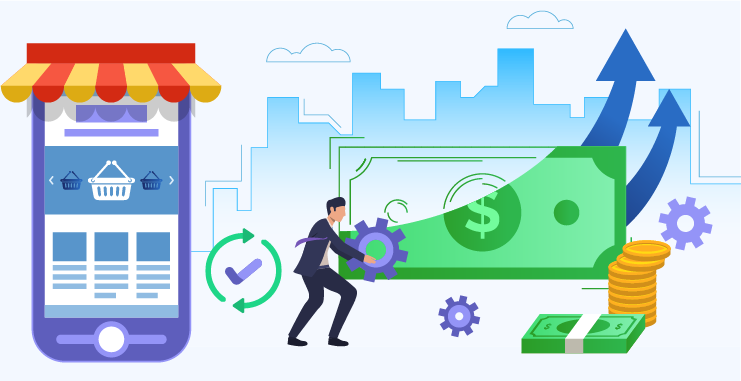
The Art of E-commerce Pricing Strategies
In the world of e-commerce, where art meets analytics, pricing strategies play a pivotal role in the success and profitability of online businesses. The Art of E-commerce Pricing Strategies is a complex yet fascinating realm that requires a delicate balance of creativity, data analysis, and consumer psychology. In this article, we'll take you on a journey through the intricacies of e-commerce pricing, exploring the strategies that can elevate your online business to new heights.
Understanding the Art of E-commerce Pricing Strategies
E-commerce pricing strategies are not mere numbers on a screen; they are a reflection of your brand, your value proposition, and your understanding of the market. To delve into this art, we must embrace perplexity and burstiness, crafting pricing strategies that baffle and engage in equal measure.
Pricing Psychology
The human mind is a labyrinth of desires and decisions. Pricing psychology leverages this complexity to influence consumer behavior. By setting prices just below round numbers, employing the decoy effect, and utilizing price anchoring, e-commerce businesses can nudge customers towards making favorable purchasing decisions.
Dynamic Pricing
In a dynamic market, rigid pricing is akin to shooting in the dark. Dynamic pricing, on the other hand, adapts to market fluctuations and consumer behavior in real time. It's a strategy where burstiness shines, as algorithms continuously analyze data to make swift pricing adjustments.
Value-Based Pricing
The heart of e-commerce pricing lies in delivering value to customers. Value-based pricing sets prices based on the perceived value of a product or service to the customer. It's a strategy that requires a deep understanding of your target audience and their needs.
Competitive Pricing
In the bustling world of e-commerce, competition is fierce. Burstiness in competitive pricing comes from constant monitoring of competitors' prices and adjusting your own to stay competitive. It's a game of strategy and agility.
Mastering E-commerce Pricing
The art of e-commerce pricing is not just about setting numbers; it's about weaving a narrative around your products or services. Burstiness is achieved through storytelling and adaptability.
Product Bundling
Bundling products together can be a burst of creativity in e-commerce pricing. By offering a bundle at a lower price than the sum of individual items, you can entice customers to buy more, boosting your sales and their satisfaction.
Flash Sales and Limited-time Offers
Creating a sense of urgency is a burst of psychology in e-commerce pricing. Flash sales and limited-time offers trigger the fear of missing out, prompting customers to act quickly.
Loyalty Programs
In the world of e-commerce, loyalty is priceless. Loyalty programs, with their tiered rewards and exclusive offers, create a burst of long-term commitment from customers.
The Data-Driven Approach
E-commerce pricing strategies are not purely intuitive; they also require data-driven decision-making.
A/B Testing
A/B testing is the quintessential burst of scientific experimentation in e-commerce pricing. By comparing the performance of two different pricing strategies, you can optimize for the best results.
AI and Machine Learning
In the digital age, AI and machine learning bring a burst of automation and precision to e-commerce pricing. These technologies analyze vast datasets to set prices that maximize profit.
The Art Meets Analytics
The true art of e-commerce pricing strategies lies in harmonizing creativity with data. This is where burstiness transforms into a symphony of success.
In the ever-evolving world of e-commerce, mastering the art of pricing strategies is crucial for success. Burstiness and perplexity, as seen in various pricing approaches, keep the e-commerce landscape dynamic and engaging. As you navigate this complex realm, remember that your pricing strategies should evolve with the market, consumer behavior, and technological advancements. Embrace the art of e-commerce pricing, and your online business will thrive.
Frequently Asked Questions
-
What is the primary goal of e-commerce pricing strategies?
The primary goal is to set prices that maximize profit while satisfying customer expectations.
-
How can I determine the optimal price for my products in real-time?
Dynamic pricing powered by algorithms is the key. It adapts to market changes and consumer behavior.
-
What role does psychology play in e-commerce pricing?
Psychology influences customer decisions through tactics like price anchoring and the decoy effect.
-
Can small e-commerce businesses compete with larger ones in terms of pricing strategies?
Yes, competitive pricing and unique value propositions can level the playing field.
-
Are there risks associated with dynamic pricing?
Yes, there are risks of pricing wars and customer backlash if not executed carefully.
-
How do loyalty programs contribute to e-commerce pricing success?
Loyalty programs create a burst of customer loyalty, leading to long-term profitability.
Summary: The art of e-commerce pricing strategies is a blend of creativity, psychology, and data analysis. Burstiness and perplexity are the key elements that make these strategies dynamic and engaging. Mastering the art of pricing is a journey that requires constant adaptation and a deep understanding of your market and customers.
